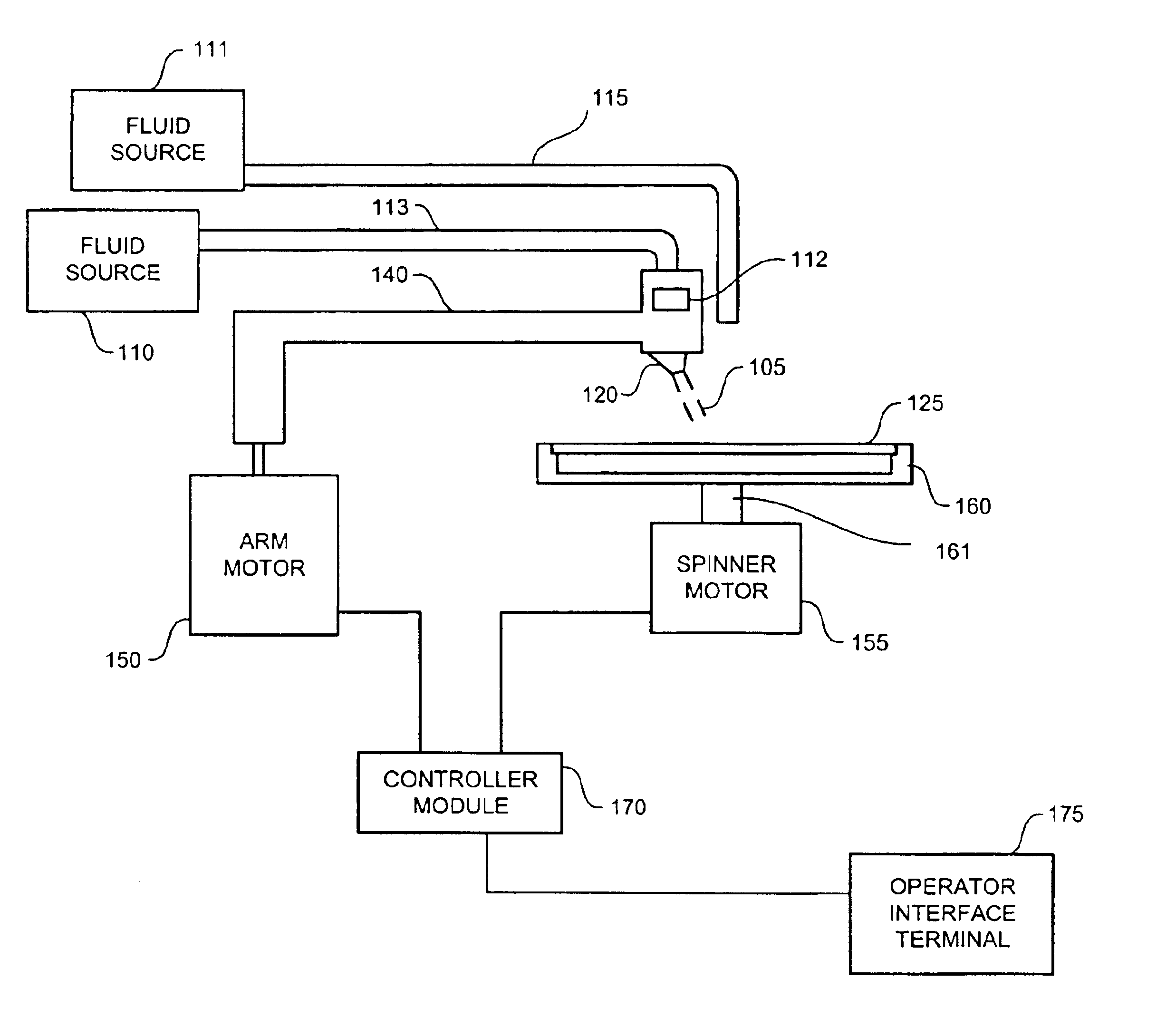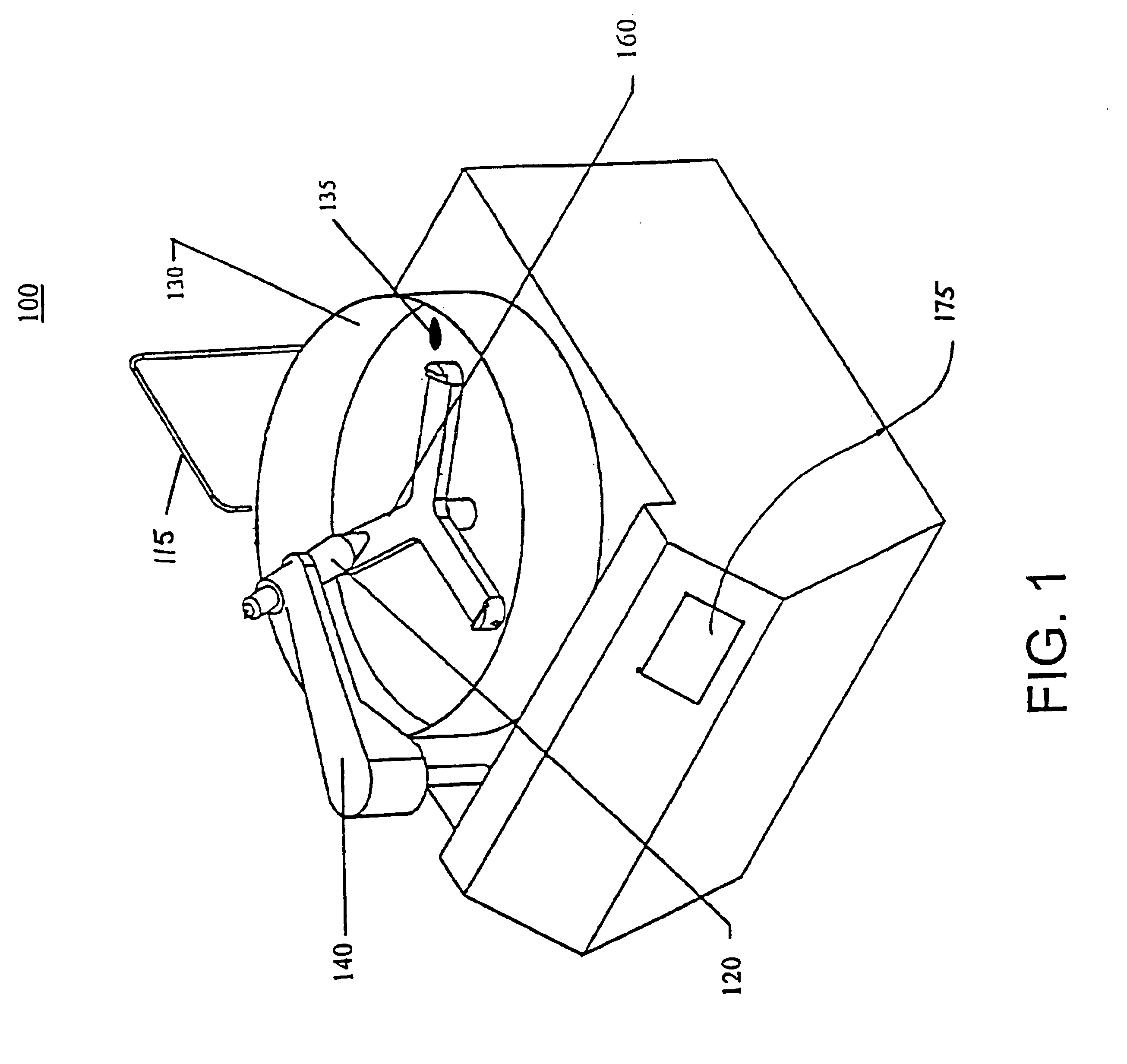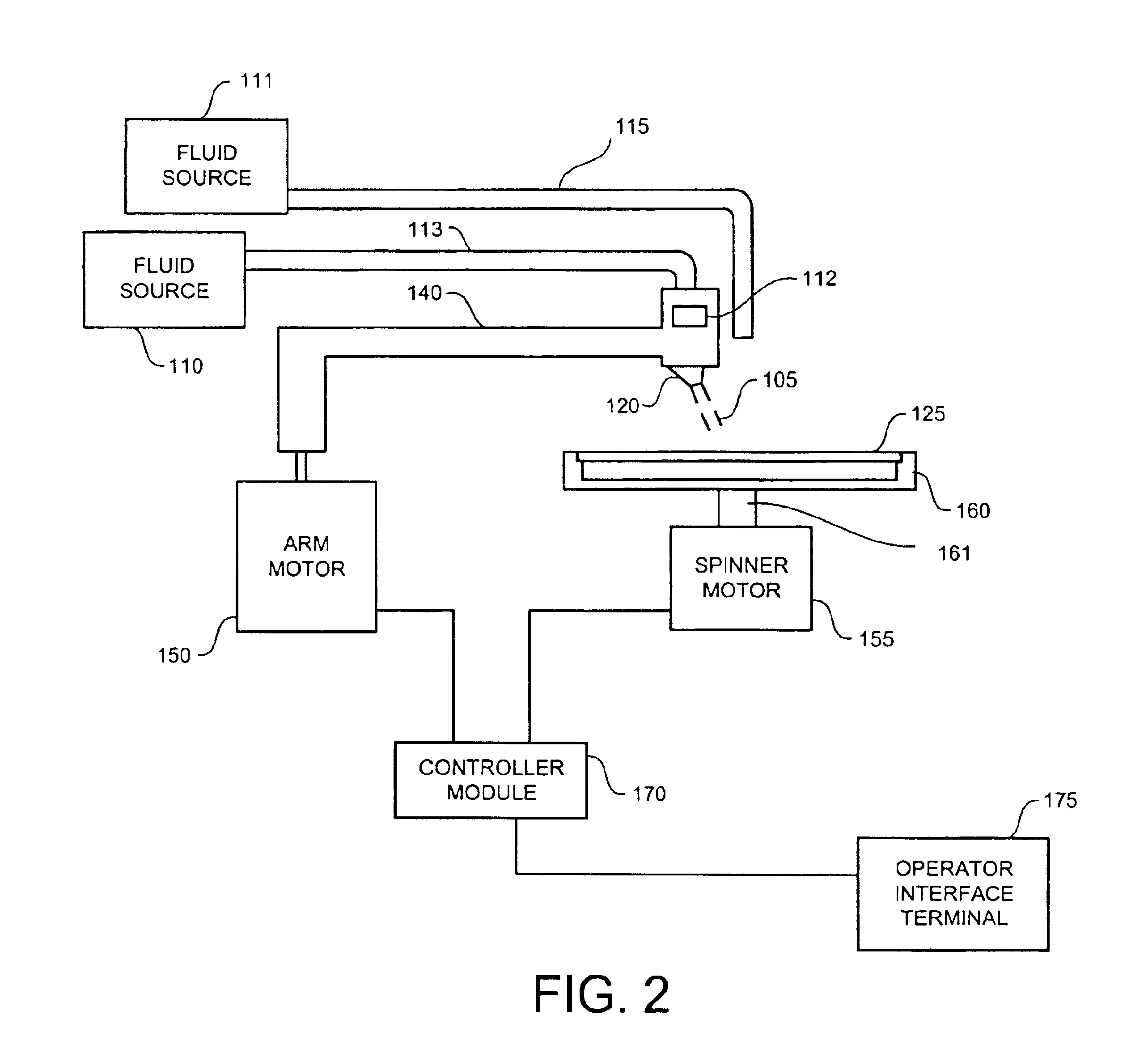Single wafer megasonic cleaner method, system, and apparatus
a single-wallet, mega-sonic technology, applied in the direction of cleaning using tools, cleaning using liquids, chemistry apparatus and processes, etc., can solve the problems of reducing the reliability and yield of the fabrication facility, many substrates are delicate, and can no longer be cleaned with brushes
- Summary
- Abstract
- Description
- Claims
- Application Information
AI Technical Summary
Benefits of technology
Problems solved by technology
Method used
Image
Examples
Embodiment Construction
The present invention addresses the shortcomings in the prior art by applying a megasonic cleaning stream in a controlled manner to the workpiece to be cleaned. The term "workpiece" includes semiconductor wafers, virgin wafers, reclaimed wafers, wafers after dicing, wafers after Chemical Mechanical Planerization, ceramic substrates, optical masks, membrane type masks (e.g., scanning electron projection lithography masks), extreme UV multi-layer masks, CD's, disc heads, optical lenses, and / or flat panel displays. For purposes of the present invention, the term "a" is used to mean one or more.
Referring to FIG. 1, a cleaning system 100 in accordance with one embodiment of the present invention is illustrated. Generally, the workpiece to be cleaned is placed in and held by the chuck 160. To remove contaminants, chuck 160 is rotated slowly while a nozzle 120 directs a stream of cleaning fluid 105 (FIG. 2) energized with megasonic energy towards the surface of the workpiece. Arm 140 moves...
PUM
| Property | Measurement | Unit |
|---|---|---|
| optimal angle | aaaaa | aaaaa |
| optimal angle | aaaaa | aaaaa |
| fixed distance | aaaaa | aaaaa |
Abstract
Description
Claims
Application Information
 Login to View More
Login to View More - R&D
- Intellectual Property
- Life Sciences
- Materials
- Tech Scout
- Unparalleled Data Quality
- Higher Quality Content
- 60% Fewer Hallucinations
Browse by: Latest US Patents, China's latest patents, Technical Efficacy Thesaurus, Application Domain, Technology Topic, Popular Technical Reports.
© 2025 PatSnap. All rights reserved.Legal|Privacy policy|Modern Slavery Act Transparency Statement|Sitemap|About US| Contact US: help@patsnap.com



